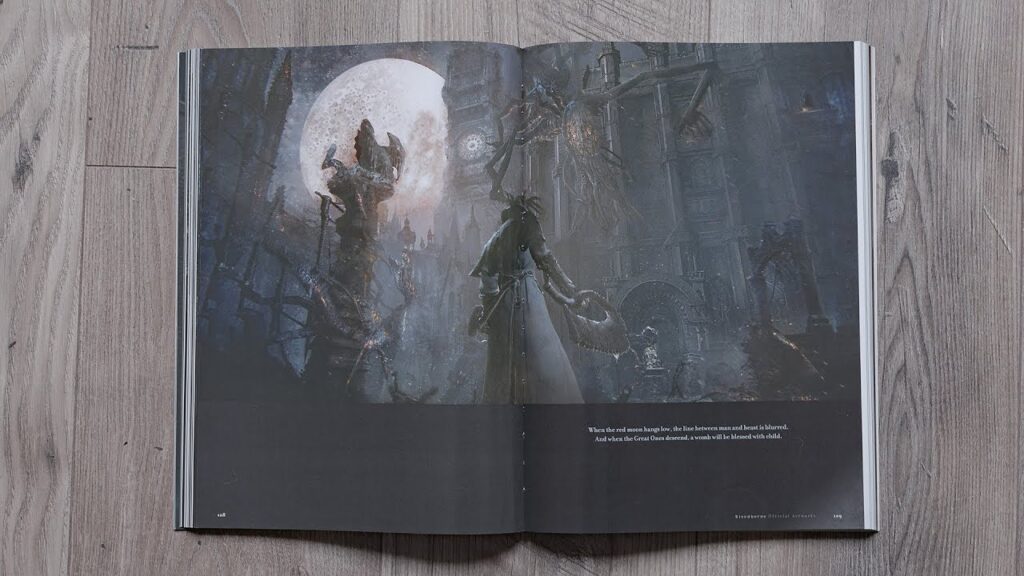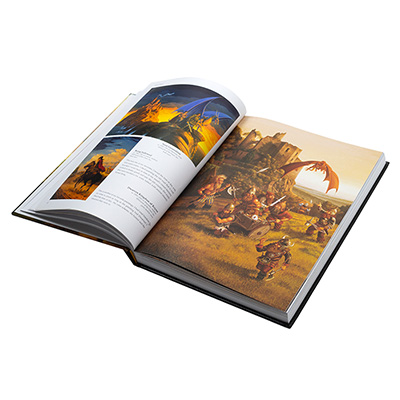Creative Features That Add Value to Your art book
Creative Features That Add Value to Your art book
Blog Article
Discover the Important Overview to Art Book Printing for Aspiring Artists and Publishers
As an aspiring artist or publisher, comprehending the subtleties of art book printing is essential to bringing your vision to life. What are the essential aspects you should concentrate on to develop a stunning art book that really represents your work?
Recognizing Different Types of Art Books
When you plunge into the world of art books, you'll swiftly uncover that they can be found in various forms, each tailored to various artistic expressions and target markets. Coffee table books often showcase stunning visuals, ideal for informal surfing, while monographs dive deep right into a private musician's job, offering context and insights. If you have an interest in certain art motions, exhibit directories use in-depth paperwork of shows, featuring essays and critiques.
For educational functions, art manuals and method books assist you through numerous mediums and designs, making them important for aiming artists. Each layout serves its objective, and knowing their differences can enhance your art book trip.
Choosing the Right Paper and Products
Selecting the ideal paper and materials can significantly impact the overall top quality and feeling of your art book. Start by taking into consideration the kind of art work you have. For vibrant colors and complex details, go with a shiny coating or a heavyweight matte paper that boosts aesthetic deepness. If your work features softer tones or structures, a natural or uncoated paper can supply a warm, welcoming touch.
Assume about the weight of the paper, as well. Thicker alternatives often lend an even more expert appearance, while lighter documents can reduce printing expenses. Don't forget the binding products; a durable cover can shield your web pages and include in guide's aesthetic.
Finally, consider sustainability. Environment-friendly choices are acquiring popularity and can mirror your worths as a musician. By carefully picking your paper and products, you'll assure that your art book not only looks terrific but likewise feels special in the hands of your readers.

Picking the Finest Printing Techniques
When it comes to publishing your art book, picking between offset and digital printing can considerably influence your last item. You'll additionally desire to take into consideration exactly how paper high quality affects the total look of your art work. Let's explore these key printing techniques to find the best suitable for your job.
Offset vs. Digital Printing
While both countered and digital printing have their advantages, selecting the appropriate strategy for your art book can significantly affect the end product. Countered printing supplies top quality images and dynamic shades, making it excellent for larger print runs. If you're aiming to generate hundreds or thousands of duplicates, offset will give you constant outcomes and lower per-unit expenses. On the other hand, electronic printing stands out for smaller quantities and quicker turnaround times. It permits simple modification, enabling you to publish unique copies without added configuration costs. Consider your budget, timeline, and the quantity of your project. Eventually, your option ought to align with your creative vision and circulation technique, making certain that your art book mirrors the high quality you prefer.
Paper High Quality Considerations
Picking the ideal paper quality can considerably boost the aesthetic charm and tactile experience of your art book. For prints, a shiny coating can make images pop, while a matte coating provides a softer, extra subtle look.
Next, think regarding the sustainability of your option. Environment-friendly alternatives are ending up being progressively popular and can attract environmentally-conscious viewers. Ultimately, request samples to see how different papers collaborate with your artwork, guaranteeing the last product mirrors your vision perfectly.
Making Certain Color Accuracy in Your Prints
To accomplish sensational prints, you need to concentrate on shade accuracy from the beginning. You'll desire to utilize color calibration techniques to validate your display and printer are in sync. Additionally, proofing your work before the last print site run can aid catch any type of disparities, assuring your art looks simply as you visualized.
Shade Calibration Techniques
Assuring color accuracy in your prints begins with efficient color calibration techniques that aid preserve consistency between your digital photos and final published items. Initially, calibrate your screen utilizing hardware calibration devices to accomplish the best shade representation. This validates that what you see on-screen suits what gets published. Next off, choose a color profile matched for your printing process, like CMYK for print products. On a regular basis examine your printer's setups and keep it to prevent color shifts. It's likewise important to make use of top notch paper that enhances your inks, as different surface areas can considerably influence shade result. By consistently applying these strategies, you'll improve the total top quality of your art prints and far better share your creative vision.
Proofing for Precision
While you may think your electronic pictures are ready for print, proofing is vital for achieving color accuracy. Before committing to a complete print run, always ask for an evidence from your printer.
If modifications are required, connect plainly with your printer regarding your desired results. Don't think twice to request multiple evidence if necessary; it's worth the investment to get it right. Eventually, complete proofing assurances that your art work is stood for as you pictured it, preserving your imaginative honesty throughout the printing procedure.

Designing Layouts That Enhance Your Art Work
When you design layouts for your art book, it's necessary to contemplate just how each component communicates with your art work. Go for a balance between visuals and message, ensuring neither overshadows the other. Use white area strategically; it gives your art work space to breathe and accentuates its details.
Consider the circulation of your book. Prepare photos in a manner that guides the viewers's eye, developing a story or thematic development. art book. Vary the sizes website here and alignments of your artwork to maintain the format dynamic and fascinating
Select typefaces that enhance your art work without sidetracking from it. Keep text succinct and relevant, providing context or understanding that enhances the audience's experience.
Lastly, test different layouts. Publish samples to see exactly how the designs equate theoretically, and readjust as required. By attentively making your layouts, you'll produce an aesthetically engaging art book that resonates with your audience.
Binding Alternatives for a Professional Complete
Picking the right binding alternative can greatly affect the total presentation of your art book. You'll wish to take into consideration both aesthetic appeals and longevity when making your selection. Popular options include ideal binding, which offers a sleek appearance and is perfect for thicker publications; saddle stitching, ideal for smaller sized brochures; and spiral binding, which enables pages to lay level for easy watching.
If you're intending for a premium feeling, case binding is an exceptional option, supplying a tough cover and an expert appearance (art book). Do not ignore the cover product; options like cloth, natural leather, or a glossy finish can boost your book's appeal
Whatever choice you select, ensure it complements your artwork and improves the viewers's experience. Take your time to weigh the pros and cons of each method, so your final item shows the quality of your creative vision.
Preparing Your Data for Print Preparedness
To assure your art book is print-ready, you'll need to pay close interest to file prep work. Beginning by setting your file dimension to match your preferred print measurements.
Take into consideration creating an evidence to examine before the final print run. Following these steps will aid you achieve a refined, professional art book.
Regularly Asked Questions
What Is the Ordinary Price of Printing an Art Book?
The standard cost of printing an art book differs, yet you can anticipate to pay anywhere from $5 to $20 per duplicate, depending on elements like dimension, paper quality, and printing quantity.
Just How Can I Locate a Reliable Printing Business?
To discover a reputable printing company, begin by investigating on-line evaluations and asking other artists for referrals. Contrast quotes, examine portfolios, and communicate browse around these guys your demands plainly to guarantee they understand your vision and top quality assumptions.
What Is the Normal Turnaround Time for Printing?
The regular turn-around time for printing varies yet generally varies from one to 4 weeks. Factors like job complexity and volume can impact this. Constantly confirm with your picked printer for certain timelines and assumptions.
Can I Print My Art Book in Limited Quantities?
Yes, you can certainly print your art book in limited amounts. Lots of printing business supply short-run choices, enabling you to generate simply the number you need, making it less complicated to manage expenses and stock.
What Legal Considerations Should I Know for My Art Book?
You ought to think about copyright, licensing agreements, and version releases when developing your art book. Ensure you have the right to use all images and message, shielding yourself from potential legal problems later on.
Report this page